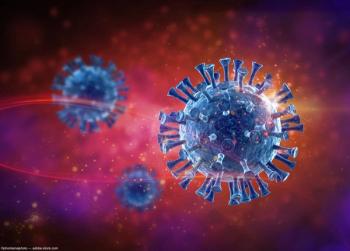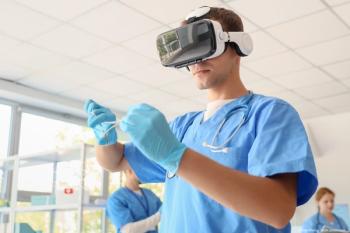
- Ophthalmology Times: January 2021
- Volume 46
- Issue 1
Eyecare professionals advise on cleaning, disinfection guidelines to promote safety
Organization shines spotlight on frontline heroes during ongoing COVID-19 battle.
This article was reviewed by Xiao Ying Liu, RN
In one of the toughest times in modern history, heroes in the health care field have been emerging globally within the backdrop of the
Many such individuals are known for their undefeatable energy in caring for severely ill patients and for devising infection control practices that are applicable worldwide in clinical practice to protect staff and patients.
Related:
Four professionals engaging in teaching health care practices are Xiao Ying Liu, RN, a staff nurse, Orbis Flying Eye Hospital, Orbis International, New York; Yan Zhang, RN, associate director of nursing, Wuhan Aier Eye Hospital, Wuhan City, Hubei Province, China; Hai Xia Tu, from the Department of Infection Control and Quality Control, Wuhan Aier Eye Hospital, Wuhan City, Hubei Province, China; and Astrid Leck, a research fellow and microbiologist at the London School of Hygiene and Tropical Medicine.
They are training health care professionals worldwide to arm themselves against the COVID-19 virus. They have compiled an article1 on the role of nursing infection control in hospitals during COVID-19.
“Standard cleaning and disinfection protocols continue to apply during the pandemic but may have to take place more often,” they emphasized.
Their guidelines for cleaning and disinfection are a compilation of measures from the World Health Organization and current research, but they also advise following national guidelines.
Related:
Cleaning, disinfection
The article by the quartet of nurses noted the importance of close monitoring of cleaning and disinfection practices and personnel involved in these activities having access to correct personal protective equipment (PPE) as well as proper training.
Appropriate PPE includes heavy-duty gloves or durable disposable nonsterile gloves, face masks, safety goggles or face shields, gowns, and closed work shoes.
All individuals involved in cleaning in the hospital setting, including matrons, domestic supervisors, and service managers, must be trained fully in safe disinfection preparation, cleaning methods and equipment used, standard precautions, and risk assessment and transmission-based precautions, the authors noted.
Importantly, heavy-duty gloves require disinfection, and disposable gloves must be changed when moving from one treatment area to another.
Related:
Disinfectant preparation
Fresh solutions of detergent and disinfection are ideally prepared for each individual cleaning shift, and fresh cloths are used.
Continued use of the same disinfectant may result in transferring pathogens to surfaces as the disinfectant becomes less effective.
Disposable disinfectant wipes are preferred when cleaning equipment surfaces. Care must be exercised to prepare the correct concentration of the disinfectants, which must be left in contact with the contaminated surfaces for sufficient time to provide adequate disinfection.
“Concentrations with inadequate dilution during preparation (too low or too high) may reduce their effectiveness. High concentrations increase chemical exposure to users and may also damage surfaces,” the authors cautioned.
If an area or piece of equipment has confirmed or suspected exposure to COVID-19, the solutions and cloths are discarded immediately.
Related:
Spraying and fumigating, the so-called nontouch methods, are not recommended for routine disinfection of indoor areas because of their associated health risks to exposed individuals.
Some disinfection solutions that are commonly and successfully used against the coronavirus are chlorine-containing disinfectants, alcohols, and hydrogen peroxide.
How to clean
The authors advised a cleaning protocol that begins in the cleanest areas and then moves to the most contaminated areas. All surfaces must be cleaned even if they appear unsoiled.
“Scrubbing may be necessary to remove and reduce visible dirt, debris, and other organic matter such as blood, secretions, and excretions. Organic material or ‘soil’ may impede direct contact of a disinfectant with a surface and inactivate the germicidal properties or mode of action of a disinfectant,” they warned.
High-traffic areas require more frequent cleaning, especially outpatient areas and rooms used by staff members to put on and remove PPE.
Related:
In addition to the frequency of cleaning, risk assessment is also a consideration. “Patient waiting areas are low risk, while operating areas are high risk,” they said.
No surfaces should be overlooked. These include the reception/outpatient waiting area, the screening and triage areas, clinic rooms, inpatients rooms/wards, recovery room, and operating theater.
Every surface in all of these areas should be cleaned at least twice daily, and the inpatient and recovery rooms should be cleaned at least 3 times daily.
“SARS-CoV-2 can remain viable for between 8 hours and several days, depending on the type of surface. Surfaces become contaminated when droplets that contain virus land on them or when hands that are contaminated touch these surfaces,” Liu, lead author of the article, concluded.
--
Xaio Ying Liu, RN
p: 800-672-4787
None of the study authors has a financial interest related to this subject matter.
--
Reference
1. Liu XY, Zhang Y, Tu HX, Leck A. Cleaning and disinfection in a health care settings during the COVID-19 outbreak. Comm Eye Health. 2020;33(109):36-37. Accessed December 8, 2020. https://www.cehjournal.org/article/cleaning-and-disinfection-in-health-care-settings-during-the-covid-19-outbreak/
Articles in this issue
almost 5 years ago
Research is unfolding the proteins in retinitis pigmentosaalmost 5 years ago
Physicians discuss advancements in the treatment of wet AMDalmost 5 years ago
Combination drops may help patients challenged by multiple glaucoma medsalmost 5 years ago
Developments in glaucoma offering hope, optionsalmost 5 years ago
Anti-VEGF medications may cause systemic complications in ROPalmost 5 years ago
Harnessing 1-2 punch of KAMPs for corneal infection, inflammationalmost 5 years ago
Study: Innovative dexamethasone formulation shows efficacy, safetyalmost 5 years ago
Transscleral laser therapy device simplifies procedurealmost 5 years ago
It takes a village to beat visual system diseases in childrenalmost 5 years ago
The value of new diagnostics and personalized medicineNewsletter
Don’t miss out—get Ophthalmology Times updates on the latest clinical advancements and expert interviews, straight to your inbox.















































